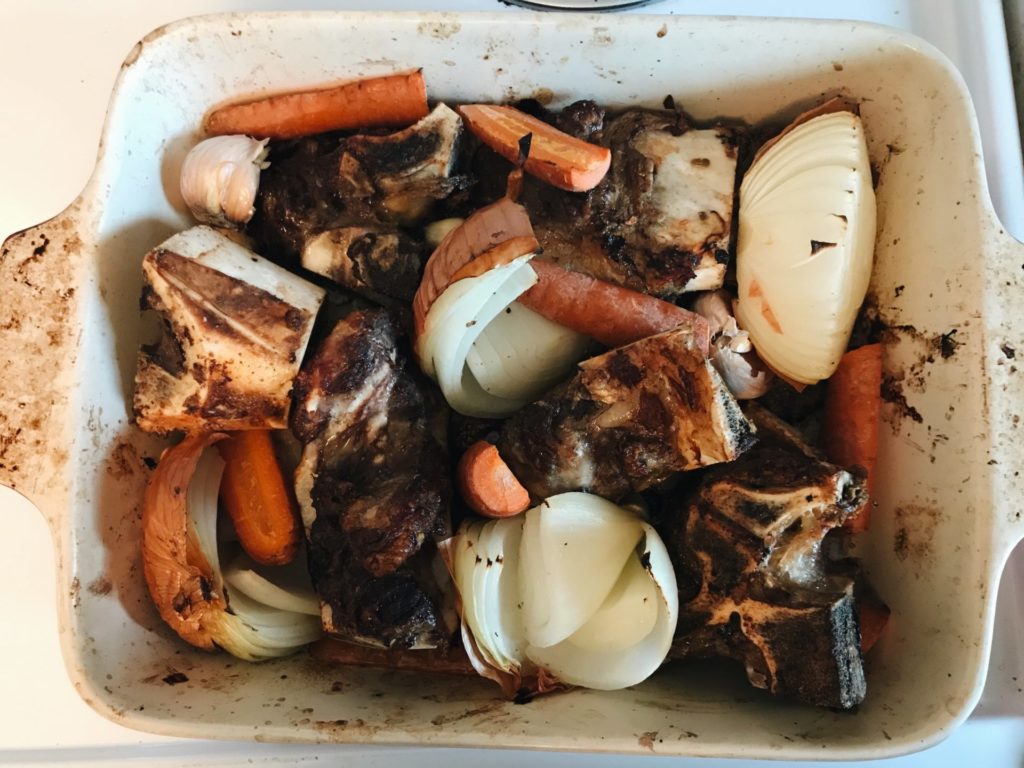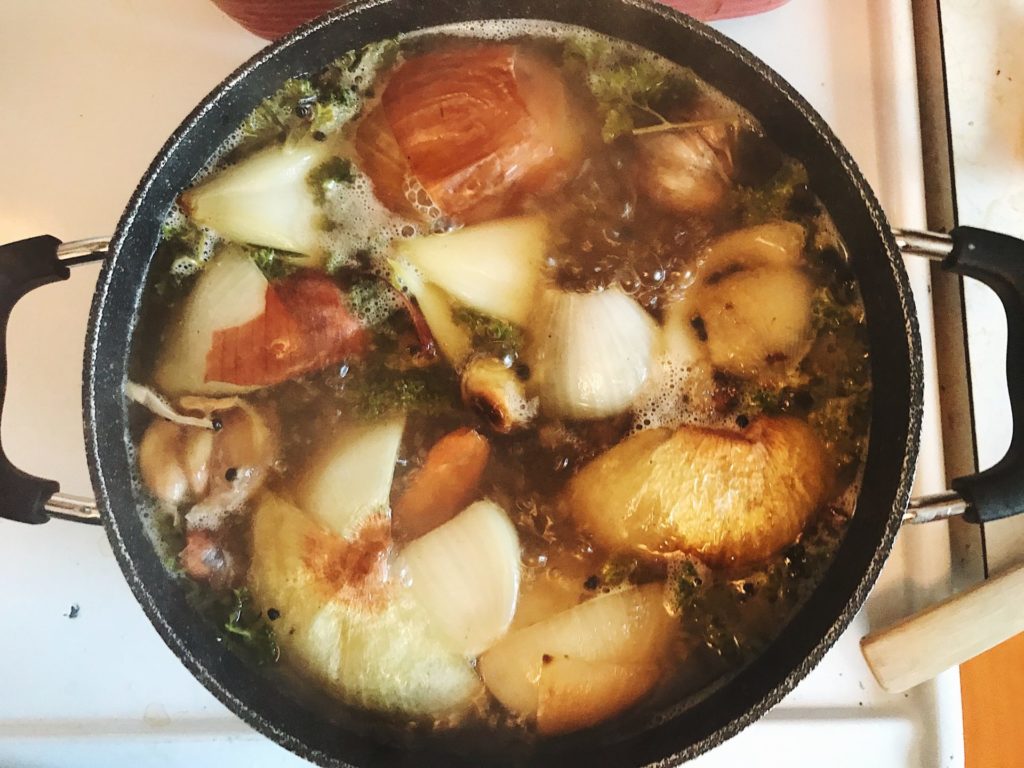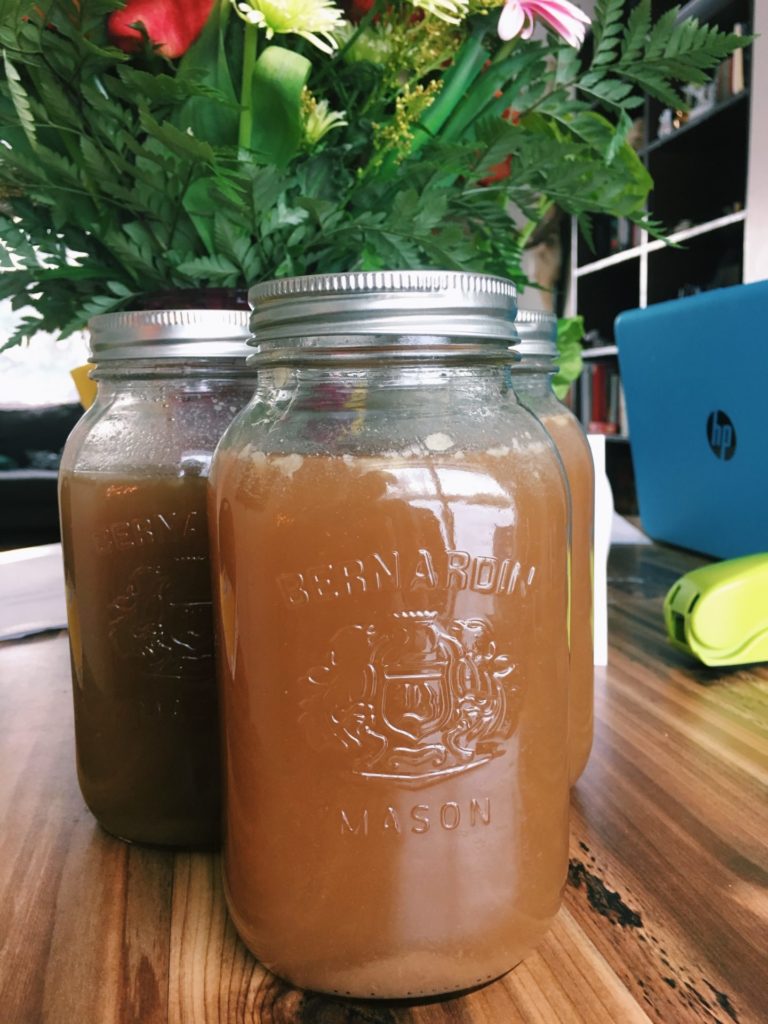With the end of 2019 fast approaching, you might find yourself staring into your freezer thinking, “What am I going to do with all these bones I got from the butcher?” Whether you want to call it broth, stock, bouillon or bone broth, this should be a staple in your freezer. Keeping in mind that some people are very particular about what should or should not go into a stock, after a couple of goes at this recipe you can find what works best for your uses. For example, while I enjoy the sweet contrast that carrots bring to broth, many choose to omit them.
Advertisement
Ingredients:
- 5 pounds venison or beef bones (a mix of oxtail, marrow and knuckles is ideal)
- 2 carrots, cut into chunks
- 1 large onion, quartered
- 1 garlic bulb, halved
- 3 celery stalks, cut into chunks
- 3 bay leaves
- 2 tbsp whole peppercorn
- 1 tsp salt
- 1 1/2 tablespoon apple cider vinegar
- Water
Method:
Preheat your oven to 450 degrees Fahrenheit. While the oven preheats, place bones onto a baking sheet. This is also a great time to chop the vegetables. Place bones into the oven and roast for 30 minutes, stirring occasionally. After time is up, add chopped vegetables to baking sheet and continue to roast for another 30 minutes, stirring several times.

Then, place the roasted bones and vegetables into a large stock pot. To get the most flavour from the bones, put a splash of water onto the baking sheet and scrape all the little bits off the bottom, and add this to the stockpot as well. You will then add the bay leaves, peppercorn, salt, apple cider vinegar and cold water to the pot. You want to add just enough water to cover the bones, but not so much that they start to float.
Advertisement

Bring to a boil, and immediately turn down to simmer uncovered for anywhere from 8 to 12 hours. Once time is up, remove as much of the large bones and vegetables that you can, then strain through wire mesh colander lined with cheesecloth. This will catch the peppercorn, bay leaves and any other smaller chunks left over from the cooking process.
Allow broth to cool before placing in the refrigerator. Any fat that solidifies on the surface can then be easily removed. The broth can be used either fresh, frozen, or pressure canned according to the manufacturer’s directions.
Advertisement

Tips & Tricks
Broth, stock, bone broth – what’s in a name? I use them all interchangeably, because for most of my cooking it doesn’t make a difference. “Bone broth” is what people drink, and is often very thick when cool, but I prefer to use my broth for soups, sauces and other meals, rather than just drinking it straight.
If you find that the broth turns out cloudy, rather than clear, this is a sign that you have boiled the bones at too high of a temperature for too long. To get a clear broth, pay careful attention that the water is at a hard simmer.
Play around with the flavours! As mentioned at the beginning, many people swear against using carrots in their recipes – but I love the flavour it imparts. I often add various other herbs that I have around, including oregano, summer savory or thyme.
The same basic ideas can be applied for creating stocks from poultry and fish – I personally choose to skip the roasting portion and simmer for a shorter amount of time, as the smaller bones break down easier.